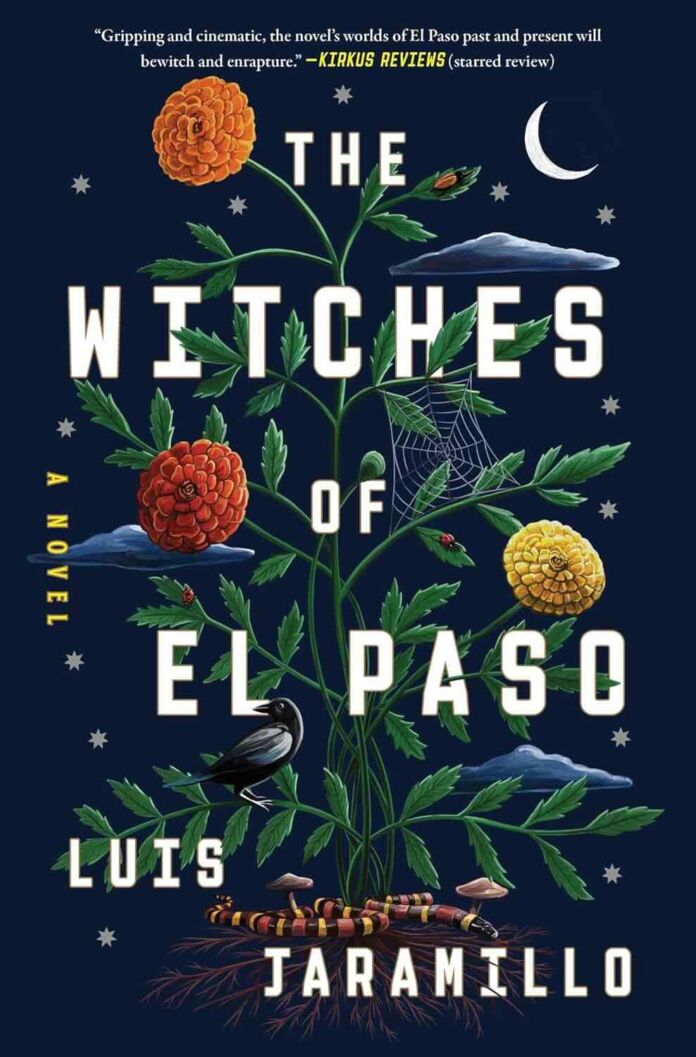In his ambitious second novel following The Doctor’s Wife, Luis Jaramillo weaves a mesmerizing tale that spans two centuries, exploring the intricate bonds between mothers and daughters, the inheritance of supernatural gifts, and the complex dynamics of family across generations. Set against the backdrop of El Paso, Texas, and Ciudad Juárez, Mexico, The Witches of El Paso masterfully blends historical fiction with magical realism, creating a narrative that is both enchanting and thought-provoking.
Narrative Structure and Storytelling
Jaramillo employs a dual timeline structure, alternating between 1943 and contemporary El Paso. The narrative primarily follows two protagonists: Elena “Nena” Montoya in the past and her great-niece Marta in the present. While this approach effectively illustrates the generational impact of magical abilities (referred to as “La Vista”), it occasionally creates pacing issues, particularly in the novel’s middle section where the transitions between timelines can feel abrupt.
The author’s prose is rich with sensory details, especially in describing the desert landscape and the atmospheric conditions of colonial Mexico. However, some readers might find the magical elements’ rules and limitations unclear, as the nature of La Vista and its manifestations sometimes seem inconsistent.
Character Development
Nena
The young Nena emerges as one of the novel’s most compelling characters. Her transformation from a restless teenager to a woman discovering her supernatural abilities is beautifully rendered. Jaramillo effectively captures her internal struggles, desires, and the weight of responsibility thrust upon her. The complexity of her relationship with Sister Benedicta and her romance with Emiliano adds layers to her character that resonate throughout the story.
Marta
While Marta’s character arc is interesting, her development sometimes feels rushed, particularly in how quickly she adapts to and accepts her supernatural abilities. Her professional struggles as a lawyer and personal life as a mother provide grounding elements to the narrative, but her character occasionally lacks the same depth that makes Nena so engaging.
Themes and Symbolism
The novel explores several interconnected themes:
- The inheritance of power and trauma across generations
- The complex nature of motherhood and sacrifice
- The fluid nature of time and memory
- The intersection of faith, magic, and identity
- Border politics and cultural identity
Strengths
- Historical Detail: Jaramillo’s research shines through in his depiction of colonial Mexico and mid-20th century El Paso. The historical elements feel authentic and well-integrated into the narrative.
- Cultural Authenticity: The author skillfully incorporates Spanish language and cultural elements without over-explanation, creating an immersive experience for readers.
- Family Dynamics: The complicated relationships between sisters, mothers, and daughters are portrayed with nuance and emotional depth.
Areas for Improvement
- Pacing: The novel’s middle section sometimes drags, with certain plot points feeling repetitive or unnecessarily extended.
- Magic System: The rules governing La Vista could be more clearly defined, as the limitations and capabilities of magical powers sometimes seem arbitrary.
- Secondary Characters: Some supporting characters, particularly in the contemporary timeline, could be more fully developed.
Writing Style and Language
Jaramillo’s prose alternates between lyrical passages describing magical experiences and straightforward narrative sections. While this approach generally works well, there are moments when the shifts in tone feel jarring. The author’s use of Spanish is natural and contextual, though some readers might wish for more subtle translations of certain phrases.
Impact and Relevance
The novel’s exploration of border culture, immigration, and family legacy feels particularly timely in today’s political climate. Jaramillo’s treatment of these themes is nuanced and thoughtful, avoiding heavy-handed messaging while still addressing important social issues.
Comparison to Similar Works
Fans of Isabel Allende’s The House of the Spirits and Silvia Moreno-Garcia’s Mexican Gothic will find familiar elements in Jaramillo’s work, though his approach to magical realism is distinctly his own. The novel also shares thematic similarities with Zoraida Córdova’s The Inheritance of Orquídea Divina, particularly in its exploration of family magic and generational secrets.
Final Verdict
The Witches of El Paso is an ambitious and largely successful novel that blends historical fiction with magical realism to explore themes of family, identity, and power. While it occasionally struggles with pacing and clarity in its magical elements, the strong character work, rich historical detail, and emotional depth make it a worthwhile read.
Recommended for:
- Readers interested in magical realism and historical fiction
- Those who enjoy multi-generational family sagas
- Fans of border literature and Mexican-American culture
- Readers who appreciate complex mother-daughter relationships
Not recommended for:
- Those who prefer strictly linear narratives
- Readers who want clearly defined magical systems
- Those seeking action-driven plots
The novel’s strength lies in its emotional core and its exploration of family bonds across time, even as it occasionally stumbles in its execution. Despite its imperfections, The Witches of El Paso offers a unique and valuable addition to the growing body of Mexican-American magical realism literature.





